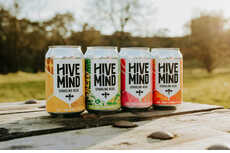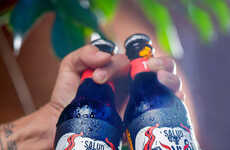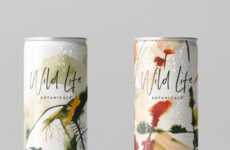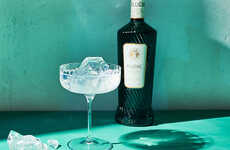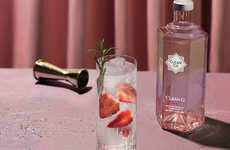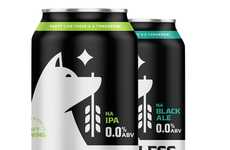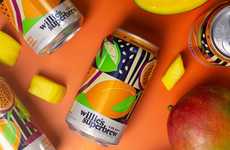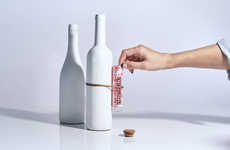
Mead-Maker Gosnells Developed 0.5% ABV Gosnells Low Alc
Laura McQuarrie — January 3, 2020 — Lifestyle
References: gosnells & barmagazine
Thanks to rising interests in low- and no-alcohol products, consumers are being introduced to a range of reinvented beer, wine and spirits—and London-based meadery Gosnells is contributing to the movement with a low-alcohol mead of its own. The Gosnells Low Alc made with European honey takes the form of a 0.5% ABV, gluten-free beverage that boasts 60 calories per can.
By favoring the use of cans, Gosnells is modernizing mead and making it more accessible to the average consumer. By comparison, Gosnells' Citra Sea, Hibiscus, Hopped and Sour Draft Mead are packaged in 330-milliliter cans—the same size as the new low-alcohol mead—and boast 4.0% ABV. While the meadery's newest product is exceptionally low in alcohol, all of these options differ from high-alcohol meads packaged by the bottle.
Image Credit: Gosnells
By favoring the use of cans, Gosnells is modernizing mead and making it more accessible to the average consumer. By comparison, Gosnells' Citra Sea, Hibiscus, Hopped and Sour Draft Mead are packaged in 330-milliliter cans—the same size as the new low-alcohol mead—and boast 4.0% ABV. While the meadery's newest product is exceptionally low in alcohol, all of these options differ from high-alcohol meads packaged by the bottle.
Image Credit: Gosnells
Trend Themes
1. Low-alcohol Beverages - As more consumers seek healthier alternatives, companies have the opportunity to explore alternative methods of creating traditional alcoholic beverages with lower alcohol content.
2. Packaging Innovation - By exploring the use of different packaging materials and formats, companies can attract a wider audience and modernize traditional products.
3. Gluten-free Products - With the growing interest in gluten-free diets, companies can explore the creation of new products that cater to this specific market.
Industry Implications
1. Alcoholic Beverages - Innovation in low-alcohol and non-alcoholic beverages can be a disruptive opportunity for companies operating in the alcoholic beverages industry.
2. Packaging Industry - Packaging companies can explore the use of new materials and designs to cater to the growing demand for modern, eco-friendly packaging solutions.
3. Health and Wellness Industry - The trend towards low-alcohol and no-alcohol beverages presents an opportunity for companies in the health and wellness industry to develop products in line with consumer preferences for healthier options.
1.1
Score
Popularity
Activity
Freshness

